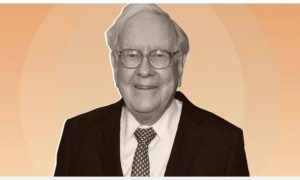Student Loan Debt
In recent years, the issue of student loan debt in the United States has reached a boiling point, with millions of Americans burdened by the weight of their educational expenses. Student debt is the second largest form of consumer credit, next to mortgages, and today, more than 45 million people owe nearly $1.7 trillion.
Read More : I’m a Bank Teller: 3 Times You Should Never Ask For $100 Bills at the Bank
Every 26 seconds, one of those student-loan borrowers defaults on their loan. The effect is not just that people can spend their whole lives deeply in debt, sometimes into old age, but that it generates further economic, gender, and racial inequality in our society.
In response, the Biden administration has proposed a series of measures aimed at alleviating this financial strain, including the implementation of a student debt forgiveness program, making it easier for borrowers who meet specific requirements to qualify for loan forgiveness. The administration also launched a new repayment plan, known as SAVE (Saving on a Valuable Education) that creates a shorter pathway to loan forgiveness for many low-income borrowers, but continuously facing legal challenges from Republican-led states that have joined one of two lawsuits challenging the repayment plan.
At an April 19 Ethnic Media Services (EMS) briefing, a panel of experts explained what programs are still on the books, which ones have been stopped or threatened, and the future avenues for college affordability and equity.
“The Biden administration has taken, I would say broadly, a two-track approach to providing debt relief. They’ve tried to provide mass student loan forgiveness for broad widespread, loan forgiveness. And they’ve also tried to implement what they call targeted relief. By improving, reforming, tweaking, existing programs,” explains Adam Minsky, student loan lawyer and author.
Read More : How Toxic Is Trump? Republican Group’s Hidden Camera Reveals Uncomfortable Truth
The Good
The key components of the program are:
- Debt Forgiveness with Saving on A Valuable Education (SAVE): The program is expected to include provisions for forgiving a portion of federal student loan debt. The extent of forgiveness and eligibility criteria are likely to vary based on factors such as income level, loan history, the school they attended, and their overall personal and financial circumstances.
- Public Service Loan Forgiveness (PSLF): The administration wants to bolster existing programs such as PSLF, which forgives the remaining balance on Direct Loans after borrowers have made 120 qualifying monthly payments while working full-time for qualifying employers.
- IDR (income-driven repayment) Account Adjustment: IDR plans offer reduced payments over 20 or 25 years, depending on the loan type, then forgive the remaining balance. Despite legal setbacks, the administration has still managed to approve upwards of 153 billion dollars in student loan forgiveness. “That’s somewhere around 4.3 million borrowers and that has been done through several separate initiatives,” adds Minsky. By the end of 2024, the program will bring millions of borrowers closer to student loan forgiveness or wipe their balances away entirely.
- The Borrower Defense to Repayment Rule (BD Rule) offers students relief from federal loans borrowed based on fraudulent, misleading, or illegal acts by their schools or from institutions that were of low financial value.
- Total and permanent disability (TPD) discharge: If you’re totally and permanently disabled, you may qualify for a discharge of your federal student loans and/or Teacher Education Assistance for College and Higher Education (TEACH) Grant service obligation.
The Bad
Read More : How Toxic Is Trump? Republican Group’s Hidden Camera Reveals Uncomfortable Truth
The loan servicing panorama is complex and plagued by lax regulations and bad actors. Michele Shepard Zampini, TICAS Senior Director of College Affordability, provides a more holistic perspective on what it’s like for the student borrowers who have experienced all the comings and goings and the various proposals from the administration and are struggling with the burden of student debt.
“Borrowers are very confused about whether or not they will be receiving student loan forgiveness. They are not sure of what the parameters are and who is eligible for what type of relief. What the consequences are for non-payment or not being able to make monthly payments as many borrowers are facing right now and what the future holds, especially in an election year, depending on whether the administration changes over after November,” adds Zampini.
The Ugly
Students are faced with the harsh reality of struggling to choose between basic living expenses like covering their rent, covering their food, or paying their loans. A case in point is Virginia Brown, a mental health counselor and social worker who just retired and was able to move closer to her family thanks to debt forgiveness. Virginia was a physician with a master’s degree in Venezuela before she moved here and became a U.S. citizen.
Read More : 3 Stocks That Will Fly While the Market Dies
However, when she moved to the U.S., Brown says, “I had to do what every immigrant does. I clean offices, I watch children, I took a childcare class to be able to work at the school where my son studied and he was almost 5 years old when I moved here.”
After a few years, she decided to take charge of her life by going back to school to get her master’s degree in mental counseling. Her only recourse was to take a loan. “You can pay back the loan, but the interest, it just grows and grows.”Brown ended up owing more than $100,000 because of the interest she was paying.”
At 72, she was able to get her student loan forgiven by working in the social services sector. Brown advises students to be vigilant about their paperwork and to keep on top of their application with officials.
The Biden administration’s student debt forgiveness program represents a significant step towards addressing the mounting crisis of student loan debt. By providing relief to millions of borrowers, stimulating economic growth, and promoting social equity, the program has the potential to reshape the landscape of higher education finance.
However, its success will hinge on careful implementation, thoughtful policymaking, and a commitment to addressing the underlying issues, like cost and determining fair and equitable eligibility criteria, which are driving the student debt crisis.





























